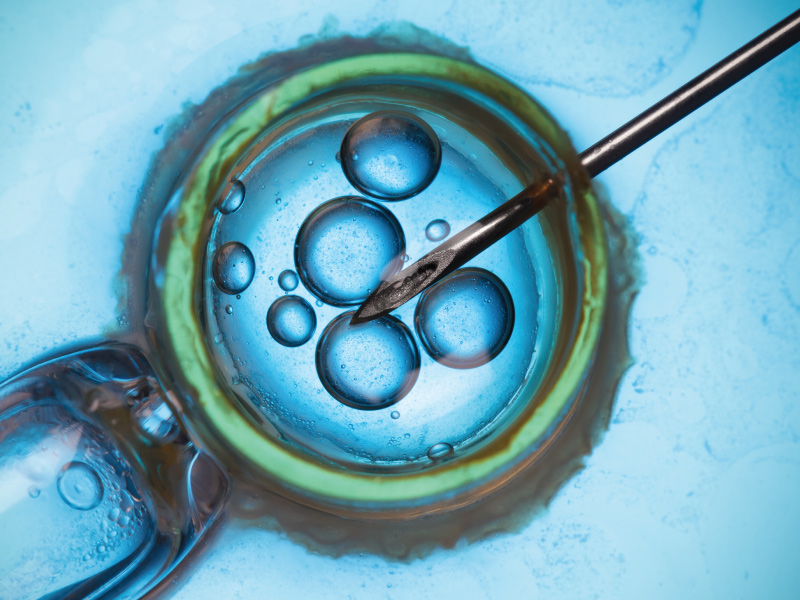
Process & Benefits of TESA & PESA
Introduction
Who needs it?
Steps
Benefits
Purpose
Cost
Conclusion
Introduction
What is TESA/PESA?
TESA is an abbreviation for Testicular Sperm Aspiration. This is an assisted reproductive treatment in which testicular tissue is extracted using a needle connected to a syringe and injected through the skin of the man’s scrotum. TESA is a bit more complicated than PESA and is conducted if no sperm is discovered within the epididymis, requiring a needle to be injected straight into the testicles.
PESA, or Percutaneous Epididymal Sperm Aspiration, is a less difficult sperm extraction process than TESA. It entails inserting a needle into the man’s epididymis, the tube that links the testicles, to retrieve sperm.
Who needs it?
TESA / PESA – Who Needs It?
When a man’s capacity to naturally release sperm via ejaculation is impaired because of a blockage of the vas deferens or epididymis, TESA and PESA are generally performed. PESA, on the other hand, includes collecting sperm with a small needle put into the epididymis, whilst TESA involves collecting sperm using a small needle injected directly into the testicles.
Some of the circumstances that may need TESA and PESA are listed below –
- Azoospermia
- Testicular failure
- Varicocele
Steps
TESA / PESA procedure
PESA
Anesthesia Administration
PESA is often done under local anesthesia, which entails injecting the anesthetic directly into the scrotum. This is done to numb the region, avoiding discomfort throughout the process.
Sperm extraction
After locating the vas deferens, a tiny needle will be placed into the vas deferens, or epididymis and the plunger pushed out to allow the seminal fluid to be sucked into the syringe.
Motile Sperm Examination
An embryologist examines the extracted seminal fluid for moving or motile sperm. If the sperms are insufficient, PESA will be repeated until enough are detected.
Before the surgery, the doctor cleans the scrotum with a warm antiseptic swab. After that, the testes are inspected by touching the scrotum for the vas deferens. This is also done to discover any obstructions or anomalies.
TESA
If, after all the PESA procedures, no sperm is found in the vas deferens or epididymis, TESA is done. A tiny needle will be inserted straight into the testicles and testicular tissue will be aspirated by drawing the plunger out. TESA, like PESA, should be used to get sufficient quality and quantity of sperm. PESA and TESA are excellent options for couples, far superior to intrauterine insemination with donor sperm in that they allow the man to contribute to the genetic structure of their offspring.
Recovery
Since both TESA and PESA are outpatient procedures, recovery takes just a day. After the procedures, the patient is usually advised to wear tightly fitting pants to support the scrotum. There is also a dose of pain relievers given to the patient. Since it is minimally invasive, the patient is usually allowed to leave the hospital or clinic within the same day.
Benefits
Benefits of TESA/PESA in IVF
Most people who are infertile believe they are sterile and will never be able to conceive a child. Most of them overlook the possibility that they have a disease that prevents sperms from exiting their reproductive system after ejaculation. PESA and TESA will pinpoint the problem and resolve it by extracting sperm from the epididymis or testicles using a tiny needle. While it may be uncomfortable, it will allow a guy to get their girlfriend pregnant through In Vitro Fertilization.
Purpose
Purpose of PESA/TESA in IVF
Because the amount of sperm retrieved using PESA or TESA is generally relatively low in comparison to the number present in an ejaculate, the sperm must usually be utilized in conjunction with a special method of IVF known as ICSI (Intracytoplasmic sperm injection) – see separate info page. Surgically obtained samples are rarely appropriate for intrauterine insemination (IUI).
Your spouse will go through an IVF cycle, and after her eggs are harvested (which is generally the same day as your PESA or TESA), your sperm will be injected straight into her eggs (a process called ICSI). The fertilized eggs are then cultivated in the laboratory for a few days before being placed into your partner’s uterus as a healthy embryo.
Cost
Cost of TESA/PESA
The total cost of TESA in India is Rs 21,500 and the cost of micro-TESA in India is 85,000.
Conclusion
TESA and PESA are simple processes that have minimal to no risk and help with conception in cases of male infertility.
To know more about TESA & PESA, its cost and other fertility-related treatments call us at 080-67238900 or click here to book your appointment with our top fertility specialists at Motherhood Fertility & IVF Centers.
Relevant Videos
Related Services
First step towards infertility is correct diagnosis and NOT treatment.
FAQs
An assisted reproductive treatment, in TESA testicular tissue is extracted using a needle connected to a syringe and injected through the skin of the man’s scrotum. PESA entails inserting a needle into the man’s epididymis, the tube that links the testicles, to retrieve sperm.
If a man’s ability to naturally release sperm via ejaculation is impaired because of a blockage of the vas deferens or epididymis, TESA and PESA would be required.
Research shows that sperm recovery by testicular sperm aspiration (TESA) has a 100 percent success rate, leading to healthy pregnancies.
